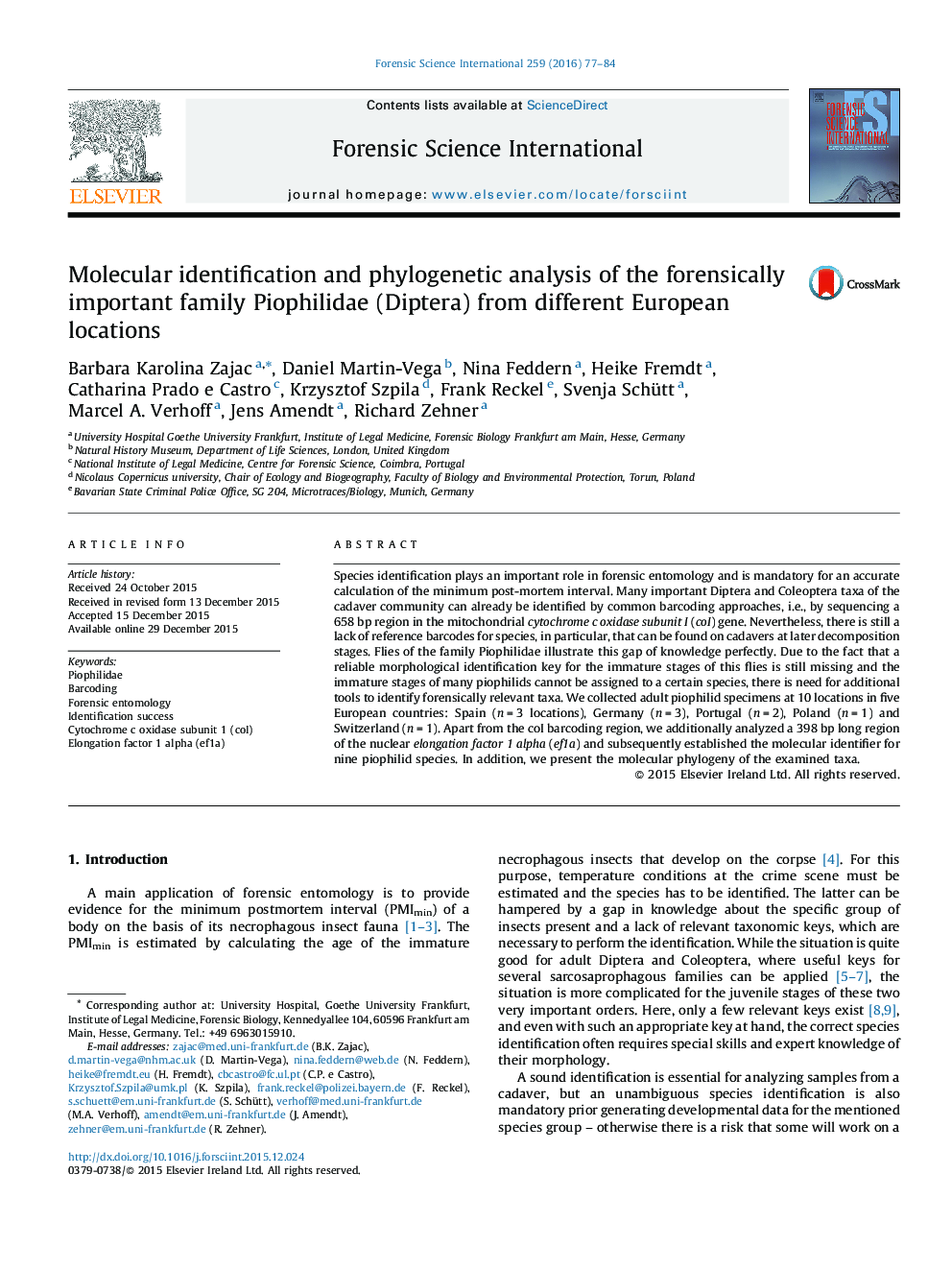| Article ID | Journal | Published Year | Pages | File Type |
|---|---|---|---|---|
| 6551856 | Forensic Science International | 2016 | 8 Pages |
Abstract
Species identification plays an important role in forensic entomology and is mandatory for an accurate calculation of the minimum post-mortem interval. Many important Diptera and Coleoptera taxa of the cadaver community can already be identified by common barcoding approaches, i.e., by sequencing a 658 bp region in the mitochondrial cytochrome c oxidase subunit I (coI) gene. Nevertheless, there is still a lack of reference barcodes for species, in particular, that can be found on cadavers at later decomposition stages. Flies of the family Piophilidae illustrate this gap of knowledge perfectly. Due to the fact that a reliable morphological identification key for the immature stages of this flies is still missing and the immature stages of many piophilids cannot be assigned to a certain species, there is need for additional tools to identify forensically relevant taxa. We collected adult piophilid specimens at 10 locations in five European countries: Spain (n = 3 locations), Germany (n = 3), Portugal (n = 2), Poland (n = 1) and Switzerland (n = 1). Apart from the coI barcoding region, we additionally analyzed a 398 bp long region of the nuclear elongation factor 1 alpha (ef1a) and subsequently established the molecular identifier for nine piophilid species. In addition, we present the molecular phylogeny of the examined taxa.
Keywords
Related Topics
Physical Sciences and Engineering
Chemistry
Analytical Chemistry
Authors
Barbara Karolina Zajac, Daniel Martin-Vega, Nina Feddern, Heike Fremdt, Catharina Prado e Castro, Krzysztof Szpila, Frank Reckel, Svenja Schütt, Marcel A. Verhoff, Jens Amendt, Richard Zehner,
